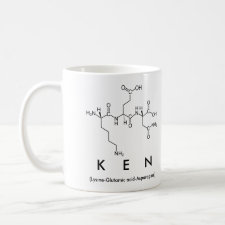
Authors: Umpleby RJ, Baxter SC, Rampey AM, Rushton GT, Chen YZ, Shimizu KD
Article Title: Characterization of the heterogeneous binding site affinity distributions in molecularly imprinted polymers.
Publication date: 2004
Journal: Journal of Chromatography B-Analytical Technologies in the Biomedical and Life Sciences
Volume: 804
Issue: (1)
Page numbers: 141-149.
DOI: 10.1016/j.jchromb.2004.01.064
Abstract: Molecularly imprinted polymers (MIPs) are polymers that can be tailored with affinity and selectivity for a molecule of interest. Offsetting the low cost and ease of preparation of MIPs is the presence of binding sites that vary widely in affinity and selectivity. Presented is a review of methods that take into account binding site heterogeneity when calculating the binding properties of MIPs. These include the bi-Langmuir, Freundlich, and Langmuir-Freundlich binding models. These methods yield a measure of heterogeneity in the form of binding site affinity distributions and the heterogeneity index. Recent developments have made these methods surprisingly easy to use while also yielding more accurate measures of the binding properties of MIPs. These have allowed for easier comparison and optimization of MIPs. Heterogeneous binding models have also led to a better understanding of the imprinting process and of the advantages and limitations of MIPs in chromatographic and sensor applications. (C) 2004 Elsevier B.V. All rights reserved



Join the Society for Molecular Imprinting

New items RSS feed
Sign-up for e-mail updates:
Choose between receiving an occasional newsletter or more frequent e-mail alerts.
Click here to go to the sign-up page.
Is your name elemental or peptidic? Enter your name and find out by clicking either of the buttons below!
Other products you may like:
 MIPdatabase
MIPdatabase









